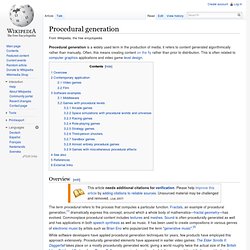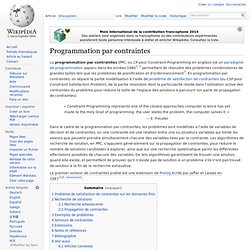

Evolutionary algorithm. Evolutionary algorithms often perform well approximating solutions to all types of problems because they ideally do not make any assumption about the underlying fitness landscape; this generality is shown by successes in fields as diverse as engineering, art, biology, economics, marketing, genetics, operations research, robotics, social sciences, physics, politics and chemistry[citation needed].

In most real applications of EAs, computational complexity is a prohibiting factor. In fact, this computational complexity is due to fitness function evaluation. Fitness approximation is one of the solutions to overcome this difficulty. However, seemingly simple EA can solve often complex problems; therefore, there may be no direct link between algorithm complexity and problem complexity. A possible limitation [according to whom?] Neuroevolution of augmenting topologies. NeuroEvolution of Augmenting Topologies (NEAT) is a genetic algorithm for the generation of evolving artificial neural networks (a neuroevolution technique) developed by Ken Stanley in 2002 while at The University of Texas at Austin.

It alters both the weighting parameters and structures of networks, attempting to find a balance between the fitness of evolved solutions and their diversity. It is based on applying three key techniques: tracking genes with history markers to allow crossover among topologies, applying speciation (the evolution of species) to preserve innovations, and developing topologies incrementally from simple initial structures ("complexifying"). Performance[edit] On simple control tasks, the NEAT algorithm often arrives at effective networks more quickly than other contemporary neuro-evolutionary techniques and reinforcement learning methods.[1][2]
Replay value. Automatic Game Design - Procedural Content Generation Wiki. Algorithms for Procedural Content Generation - Procedural Content Generation Wiki. Procedural generation. Procedural generation is a widely used term in the production of media; it refers to content generated algorithmically rather than manually.

Often, this means creating content on the fly rather than prior to distribution. This is often related to computer graphics applications and video game level design. Overview[edit] The term procedural refers to the process that computes a particular function. Fractals, an example of procedural generation,[1] dramatically express this concept, around which a whole body of mathematics—fractal geometry—has evolved. The modern demoscene uses procedural generation to package a great deal of audiovisual content into relatively small programs. In recent years, there has been an increasing interest in procedural content generation within the academic game research community, especially among researchers interested in applying artificial intelligence methods to the problems of PCG.
Game mechanics. Game mechanics are constructs of rules intended to produce a game or gameplay.

All games use mechanics; however, theories and styles differ as to their ultimate importance to the game. In general, the process and study of game design, or ludology, are efforts to come up with game mechanics that allow for people playing a game to have an engaging, but not necessarily fun, experience. Game mechanics vs. gameplay[edit] Gameplay refers to the overall game experience or essence of the game itself. There is some confusion as to the difference between game mechanics and gameplay. For example, the basic gameplay of a shooting or fighting game is to hit while not being hit.
However, from a programming or overall design perspective, basic gameplay can be deconstructed further to reveal constituent game mechanics. Game mechanics vs. theme[edit] Games that are mechanically similar can vary widely in theme. Turns[edit] Even in real-time computer games there are often certain periodic effects. Game engine. Algorithme de remplissage par diffusion. Un article de Wikipédia, l'encyclopédie libre.

Principe général[modifier | modifier le code] Game design. Un article de Wikipédia, l'encyclopédie libre.

Le game design ou conception de jeu est le processus de création et de mise au point des règles et autres éléments constitutifs d'un jeu. Jesse Schell[Qui ?] Le décrit par la phrase suivante : « Le game design est l'acte par lequel on décide ce qu'un jeu doit être » (Game design is the act of deciding what a game should be)[1]. Ce terme s'applique à tout type de jeu, dont les jeux de société et les jeux de cartes, et a connu un regain d'intérêt à la suite de l'apparition et de la popularisation des jeux vidéo.
Historique[modifier | modifier le code] Les jeux ont été étudiés tout d'abord aux plans historique ou anthropologique, notamment par des personnalités comme Johan Huizinga ou Roger Caillois[2]. Programmation par contraintes. Un article de Wikipédia, l'encyclopédie libre.

La programmation par contraintes (PPC, ou CP pour Constraint Programming en anglais) est un paradigme de programmation apparu dans les années 1980[1],[2] permettant de résoudre des problèmes combinatoires de grandes tailles tels que les problèmes de planification et d'ordonnancement[3]. En programmation par contraintes, on sépare la partie modélisation à l'aide de problème de satisfaction de contraintes (ou CSP pour Constraint Satisfaction Problem), de la partie résolution dont la particularité réside dans l'utilisation active des contraintes du problème pour réduire la taille de l'espace des solutions à parcourir (on parle de propagation de contraintes). « Constraint Programming represents one of the closest approaches computer science has yet made to the Holy Grail of programming: the user states the problem, the computer solves it. » — E.
Freuder.